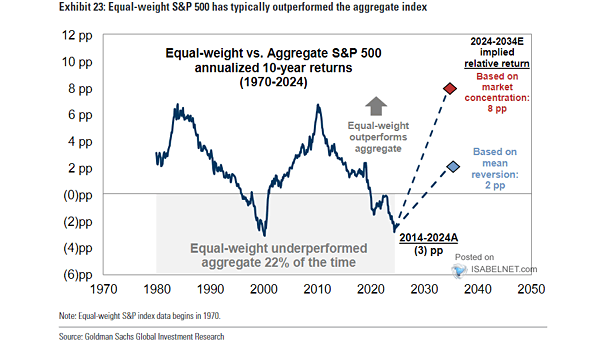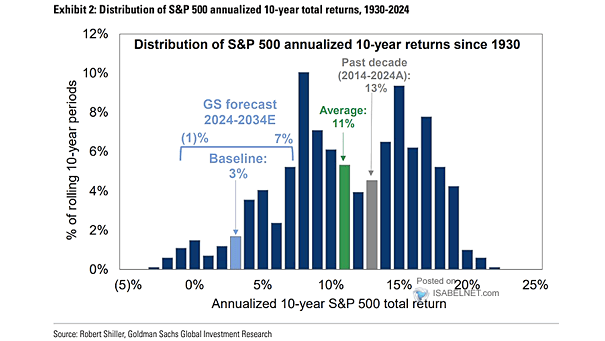Equal-Weight vs. Aggregate S&P 500 10-Year Trailing Relative Returns
Equal-Weight vs. Aggregate S&P 500 10-Year Trailing Relative Returns Current market conditions suggest that investors might benefit from considering an equal-weight strategy for the S&P 500, especially in light of the significant concentration observed in the index. Image: Goldman Sachs Global Investment Research


